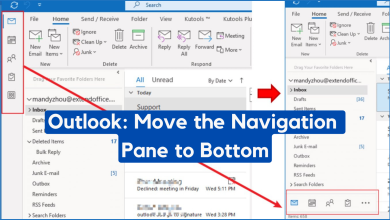Outlook Won’t Open? Try These Fixes!
If Outlook is not opening on your Windows PC and crashing as you attempt to launch it, the application might be dealing with a corruption error or there can be an issue within the system that is causing the app to malfunction.

In most cases, errors like this are caused by corrupt user profiles, faulty extensions, and issues within the Office files. Below, we have listed several effective troubleshooting methods that worked for other affected users who were facing the same problem.
Hopefully, they will help you resolve the issue in no time as well.
1. Restart Your PC
It may be helpful to restart the computer before moving on to more complicated troubleshooting methods.
There is a chance that you are unable to use the Office application due to a temporary bug or corruption error. Most of the time, you can fix these issues by restarting the system since they are temporary.
If restarting does not work, proceed to the next method below.
2. Create a New Profile
You also might be unable to open the Outlook application because your user profile is corrupt.
To make sure this is not the case in your situation, we suggest creating a new user account and checking if that makes any difference.
Here is how you can proceed:
- Type Control Panel in Windows search and click Open.
- Type Mail in the search bar and click on the most appropriate result.
- In the following dialog, click on Show Profiles.
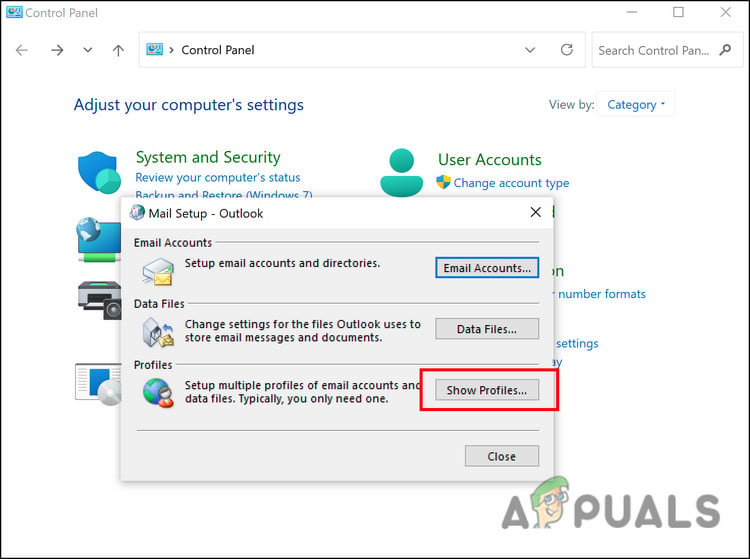
Click on the Show Profiles button - Then, click on the Add button.
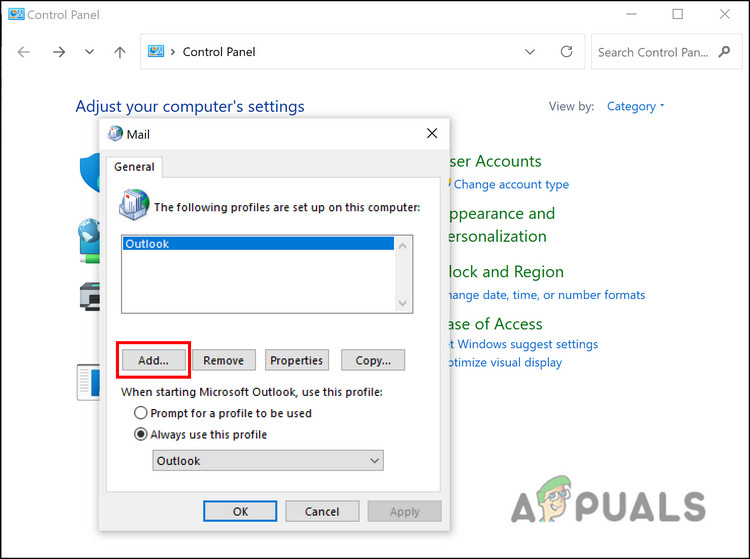
Select Add - Next, type in the name you want to set for your new profile in the text box for Profile Name.
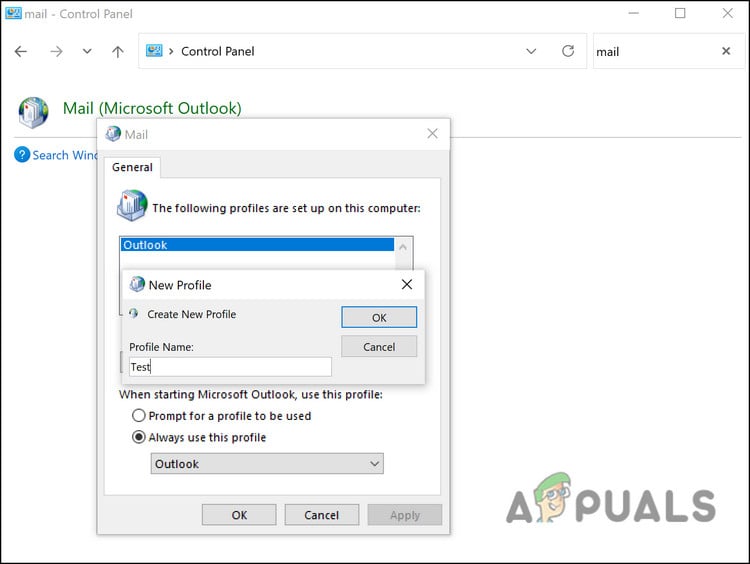
Add a name for the profile - Now, fill in the rest of the details in the Add Account dialog and click Next.
- Finally, click on the Finish button to save the changes.
Once that is done, use this account to log into Outlook and see if that helps.
3. Disable Extensions
Additionally, sometimes the extensions installed can cause the problem. You may want to consider disabling extensions in Outlook if you are using them, to fix the problem.
Here is how you can do that:
- Launch Outlook and head over to the File tab.
- Select Options from the left pane.
- In the Options dialog, click on the Add-ins option.
- Click on the Go button in the following window.
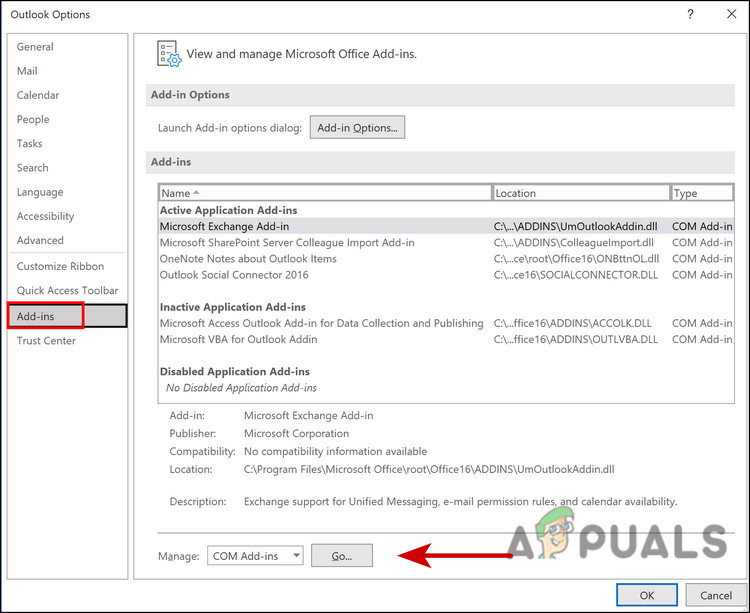
Click on the Go button - Uncheck all the boxes associated with the extensions to disable them.
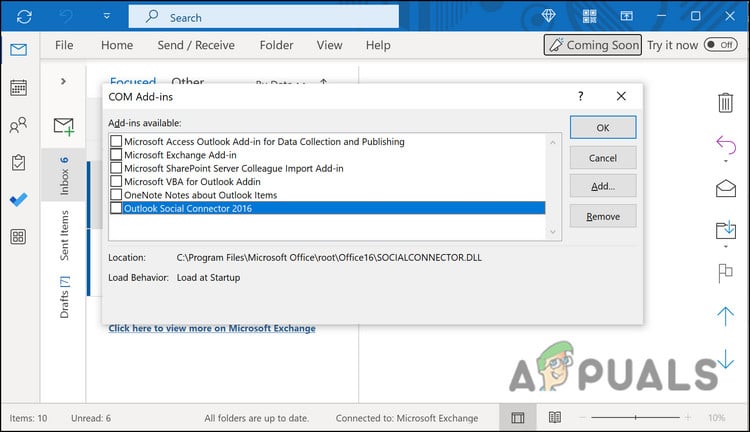
Disable all the installed extensions - Click on the OK button to save the changes.
4. Run Outlook in Safe Mode
In Safe Mode, all third-party integrations and add-ons are disabled, leaving only the basics available.
In the same way that Windows uses Safe Mode, most apps within the system do, too. We’re going to run Outlook in Safe Mode to see if the problem still exists in this method.
In the case it does not, then a third-party integration must be the problem. However, if you encounter the problem in Safe Mode as well, you can proceed to the next troubleshooting step.
- Press Win + R to open Run.
- Type outlook /safe in the text field of Run and hit Enter.
Hopefully, Outlook will launch in the Safe Mode without any problems.
5. Repair Outlook
You can also use the built-in repairing tool to fix Office app problems. With this tool, Microsoft identifies and fixes potential issues that might be causing one or more Office apps to act up.
There are two ways to repair the device; Quick Repair and Online Repair. Using Quick Repair, the problem can be fixed without the use of an internet connection. Alternatively, you can use the Online Repair option, which may take a few minutes to complete.
Here is how you can proceed:
- Press Win + R keys together to open a Run dialog.
- Type control in the text field of the dialog and press Enter.
- Click on the Programs option in the Control Panel window.

Click on Programs in the Control panel window - Choose Programs and Features.
- Your screen should now display a list of installed programs. Locate Office 365 and right-click on it.
- Choose Change from the context menu.
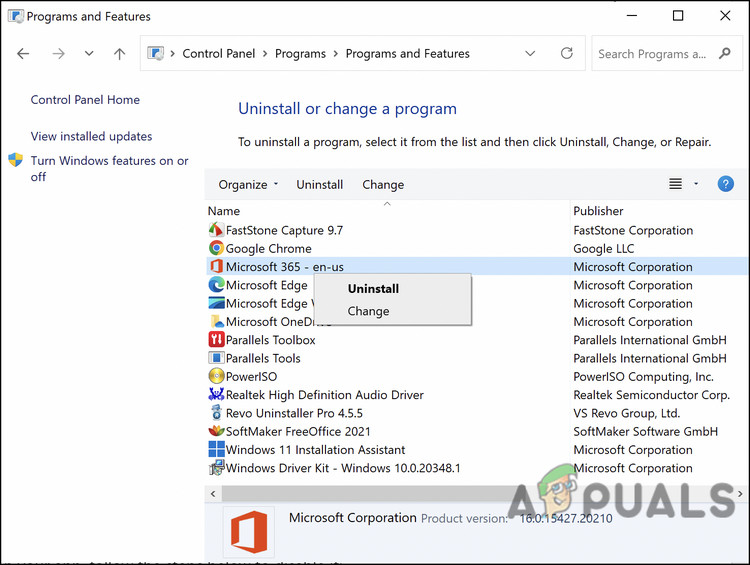
Click on the Change button - In the following window, you will see two options; Online Repair and Quick Repair.
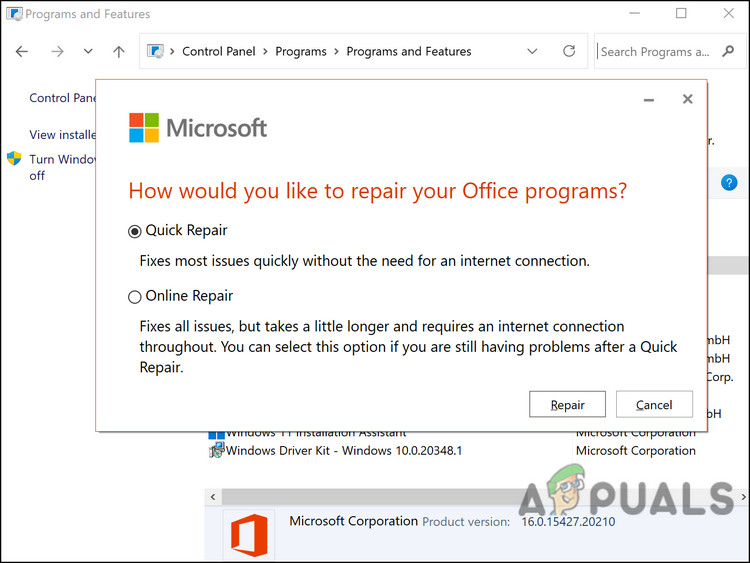
Quick and Online repair options - Choose Quick Repair first and see if that fixes your problem.
- If the error persists, go for Online Repair and wait for the process to complete. Then check if the issue is resolved.
6. Edit Windows Registry
Another fix that worked for users was deleting a specific registry key from the Registry Editor. If you do not know already, the Windows Registry is an advanced-level tool that contains information about the programs and processes of the Windows operating system in the form of keys.
You can modify the functions of your operating system by editing or deleting these keys, which is exactly what we will be doing in this method.
However, since the Registry editor is a critical utility, we highly recommend creating a backup before you proceed with the steps below. This will help you revert to the current state of the Registry if anything goes wrong during the process.
Here is what you need to do:
- Press Win + R together to open a Run dialog.
- In the text field of the dialog, type regedit and click Enter.
- Once you are inside the Registry Editor, navigate to the location mentioned below.
HKEY_CURRENT_USER\SOFTWARE\Microsoft\Windows NT\CurrentVersion\Windows Messaging Subsystem- Right-click on the Profiles key and choose Delete.
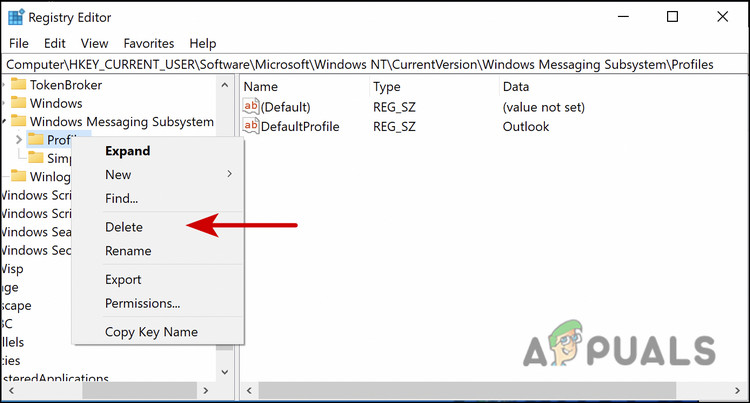
Once done, close the Registry Editor and check if you can launch Outlook now without any issues.
7. Repair Outlook Files
All of your email messages, events, contacts, and tasks are stored in Outlook’s data files. Like cache data, these files can also become corrupt at times, leading to issues like the one at hand.
Fortunately, repairing these corrupt files is quite easy and simple. If the corrupt data files are causing the problem, then repairing them by following the steps below should do the trick for you. We will be using the Inbox repair tool (scanpst.exe) for this purpose.
Here is all that you need to do:
- The first step is to locate the scanpst.exe file. The users of Microsoft 365 / Outlook 2019 / Outlook 2016 will find it in the following File Explorer location.
C:\Program Files\Microsoft Office\root\office16\
- If you are using Outlook 2013, navigate to the following:
C:\Program Files (x86)\Microsoft Office\Office15\
- If you are an Outlook 2010 user, then navigate to the following location:
C:\Program Files (x86)\Microsoft Office\Office14\
- Once you have located the file, double-click on the Inbox Repair Tool to run it.
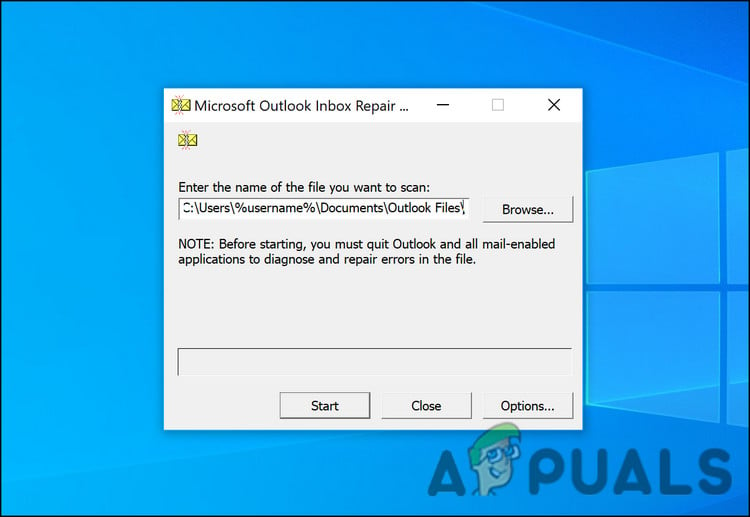
Run the Inbox Repair Tool - The tool should ask you to provide the location of the pst file to scan. Those of you using Outlook 2007 and previous versions, navigate to the following location:
C:\Users\%username%\AppData\Local\Microsoft\Outlook\
- Outlook 2010, Outlook 2013, Outlook 2016, Outlook 2019 and Microsoft 365 users must head over to the following:
C:\Users\%username%\Documents\Outlook Files\
- Now, press the Start button to begin the scanning process.
- After the scan completes, click on the Details button to check what was causing the issue.
- You can now press the Repair button to begin fixing the error. This process may take a while so hang in there.
Once the repair process completes, hopefully, you will be able to use Outlook without any problems.
8. Check If Outlook is Running in Compatibility Mode
You might be also encountering the issue if you are using Outlook in compatibility mode. The solution to this is simple, as all that you need to do is disable this mode to make Outlook launch and run like before.
Here is how you can do it:
- Find the Outlook.exe file by navigating to the following location in the File Explorer if you are an Outlook 2013 user:
C:\Program Files\Microsoft Office\Office 15\ or C:\Program Files (x86)\Microsoft Office\Office 15\
- Those using Outlook 2010 can navigate to the following:
C:\Program Files\Microsoft Office\Office 14\ or C:\Program Files (x86)\Microsoft Office\Office 14\
- Right-click on the Outlook.exe file and choose Properties from the context menu.
- In the following dialog, head over to the Compatibility tab and if any box there are checkmarked, unchecked them.
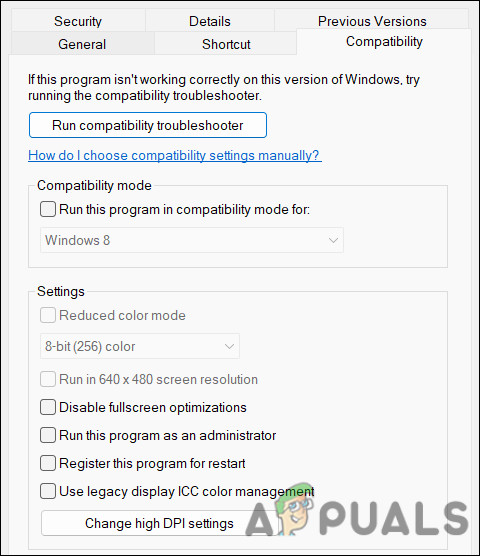
Uncheck the options in the Compatibility tab - Click on Apply > OK to save the changes.



